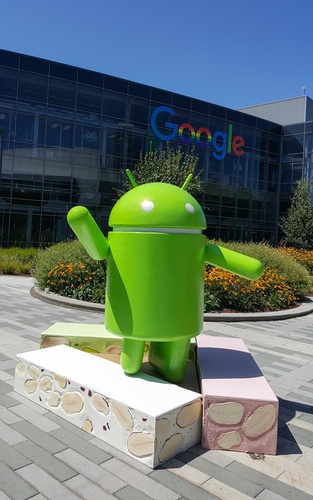Key Takeaways:
- The Linux Terminal app on Android 16 QPR2 beta now accesses most device files.
- This update runs inside a secure Linux VM on your phone.
- Developers can build and test apps directly on Android devices.
- Security controls still protect user data and privacy.
Android 16 Brings New Linux Terminal Features
Google just rolled out a big update to Android’s Linux Terminal app. With Android 16 QPR2 beta, the Linux Terminal can see almost every file on your phone. This change lets developers work faster and smarter right on their Android device. Moreover, it keeps strong security guards to protect user data.
Why this matters
Until now, the Linux Terminal on Android ran in a limited sandbox. Developers could not reach many system files or app data. However, Android 16’s QPR2 beta lifts most of those limits. Therefore, app building, debugging, and testing get much easier on mobile devices.
Seamless workflows between mobile and desktop
For years, developers switched between a desktop and a phone to code and test apps. Now, the Linux Terminal can handle both tasks in one spot. You can clone a code repo, run builds, and deploy tests all on your phone. As a result, your mobile device becomes a powerful coding station.
How the Linux Terminal Boosts Mobile Development
Boosted productivity
With broad file access, you no longer copy files back and forth. Instead, you work inside the Linux Terminal on the same OS that runs your apps. Consequently, you save time and reduce errors during development. This streamlined flow can speed up testing cycles by hours.
Testing made simple
You can now tweak app files directly in the Linux VM. After saving, run your test builds instantly. Moreover, you can inspect log files, config files, and system files in one place. Therefore, your debugging process feels just like using a desktop IDE.
Version control on the go
The Linux Terminal supports Git and other version tools. You can pull updates, push commits, and manage branches on your phone. This capability means you can review or merge code when you’re away from your laptop. In turn, collaboration stays smooth across the team.
Security Safeguards in the Linux Terminal
Maintaining user privacy
Even with wide file access, Android still isolates app data by default. The Linux Terminal cannot see data of apps that opt out of shared storage. Moreover, system files remain under strict permission controls. In other words, the update balances freedom with privacy.
Permission prompts
Whenever the Linux Terminal tries to reach restricted files, Android prompts you. You decide to allow or deny each request. This way, you keep full control over what the Linux VM can access. Thus, accidental data leaks stay blocked.
Sandbox protection
The Linux VM remains sandboxed from the main Android system. Even if a command goes awry, it cannot harm core OS files. In addition, Google updated the VM’s container tech to patch recent security holes. Therefore, you get both power and peace of mind.
What This Means for Developers
Mobile-first coding
Now you can draft code on a commute and test it before you step into the office. Your phone becomes a true development device. This shift could lead to more mobile-first apps built entirely on Android gear.
Edge case testing
Need to see how apps behave with certain system settings? The Linux Terminal can tweak config files on the fly. You can mimic real-world scenarios, such as low storage or custom system flags. As a result, your apps become more robust.
Curriculum and workshops
Educators and trainers can show coding steps directly on Android hardware. Students learn Linux commands, file systems, and app deployment hands-on. This approach might spark more interest in mobile development careers.
When Can You Try the Linux Terminal Update
QPR2 beta program
The new Linux Terminal features appear in Android 16 QPR2 beta. To join, enroll your Pixel device in the beta program. Once you install the update, open the Linux Terminal app to unlock file access.
Future public release
Google plans to roll out the QPR2 improvements to all Android 16 users soon. Expect the stable release within weeks after beta feedback wraps up. After that, any Android 16 phone can tap into the new capabilities.
Tips for getting started
• Back up your device before beta testing.
• Update the Linux Terminal app from the Play Store.
• Grant storage permissions when prompted.
• Explore the file system using simple commands like ls and cd.
• Test building a small sample app to see the flow in action.
Looking ahead
This update hints at deeper integration between Linux and Android. Soon, more developer tools might join the Linux Terminal. Imagine IDEs or GUI editors running inside the Linux VM on your phone. As a result, Android hardware could rival laptops for coding tasks.
Conclusion
Android 16’s QPR2 beta gives the Linux Terminal app wide file access in a secure VM. This change simplifies workflows and boosts productivity for mobile developers. At the same time, Android keeps strong permission and sandbox protections. Ultimately, this update could reshape how we code on phones, making mobile development more flexible than ever.
Frequently Asked Questions
How do I enable the new Linux Terminal features on Android 16?
Join the Android 16 QPR2 beta program. Then update your Pixel phone and open the Linux Terminal app. Grant the requested permissions to access files.
Can the Linux Terminal see all my personal photos and messages?
No. Apps that opt out of shared storage stay private. The Linux Terminal only sees files you explicitly allow it to access.
Will non-Pixel devices get this feature?
Google tests first on Pixel. After stable release, other Android 16 devices should receive the update via OS upgrades.
Is the Linux Terminal safe to use for app development?
Yes. Google added sandboxing and permission prompts. These safeguards protect system files and user data while you work.

